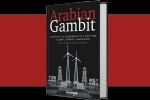
Economic diversification is an imperative for the Middle East. The region’s overdependence on petrochemicals in manufacturing is a widely acknowledged risk that weakens resilience and could impede future economic growth. The industry contributes 24% of GDP in Saudi Arabia and 16% in the UAE in terms of oil rents, compared with less than 1% in the U.S. and China. Middle East governments need to decide which tech segments within the vast technology universe—and even which product families within segments—they want to pursue with large-scale projects, and provide ample support to attract global tech companies as occupants.
In recent years, some Middle East countries, chiefly in the GCC, have launched ambitious programs to diversify and expand their manufacturing. These countries seek to meet national and regional demand, and position them as export platforms. Typically, these projects are part of a state-led master economic development plan.
Countries are prioritizing technology for localization because of its growth potential and strategic importance. At present, the high tech manufacturing is concentrated in a handful of countries (none in the Middle East), whose companies function as providers to the world. The COVID-19 pandemic highlighted the region’s susceptibility to supply chain disruptions and tested its resilience, making it sometimes difficult or impossible for companies to secure the technology on which they depend.
“Three categories of manufactured tech products, with a combined Middle East market size of roughly $125 billion, are well-suited to Middle East localization opportunities”
Countries are prioritizing technology for localization because of its growth potential and strategic importance. At present, the high tech manufacturing is concentrated in a handful of countries (none in the Middle East), whose companies function as providers to the world. The COVID-19 pandemic highlighted the region’s susceptibility to supply chain disruptions and tested its resilience, making it sometimes difficult or impossible for companies to secure the technology on which they depend.
In response, governments and regional authorities are accelerating their localization initiatives, as are large, global tech manufacturers with similar interests. Three categories of manufactured tech products, with a combined Middle East market size of roughly $125 billion, are well-suited to Middle East localization opportunities: advanced materials such as nano materials, smart materials, and bio-plastics; advanced components such as electronic semiconductor components and battery components; and advanced finished products such as general purpose robots, space systems, IoT devices, and 3-D printers. Some of these products are disruptive and innovative; others are mainstream but satisfy the pressing needs of regional companies in numerous sectors.
Competition among countries will be fierce as they stake claims on lucrative tech segments, gain first-mover advantage, and attract tenants. Already in the Middle East, NEOM Tech & Digital Company, founded in 2021 as the first subsidiary to be established out of NEOM, is building advanced digital infrastructure. Likewise, the industrialization and innovation strategy of the UAE led by Mubadala projects is focused on localization of high tech products.
In this environment, Middle East governments must target first those localization opportunities that have confirmed market potential and grant them the right to win. Experience elsewhere indicates that governments should select products that: have captive and sizable national and regional demand, are in markets that are not yet highly concentrated, can be manufactured cost competitively in global terms, and that could create potential network effects for additional manufacturing localization opportunities.
Next, after identifying the right opportunity, Middle East governments must put in place a supportive ecosystem. Financial incentives may include direct subsidies to lower up-front capital expenditure requirements, and indirect subsidies such as tax breaks to reduce long-term operating expenditures. Governments will also need to ensure seamless integration into global supply chains, enabled by reliable and modern physical infrastructure for road, sea, and air transport, and by digital networking capacity.
Likewise, regulatory and policy reforms targeted at the technology sector can help lure potential tenants to region. These could include support for technology adoption, ensuring data security, and protecting intellectual property. Similarly, pure water, enabled by investments in desalination plants if needed, and high-quality and stable electricity, are prerequisites for a successful ecosystem.
Finally, to bolster their chances of success, governments should choose tenants carefully, giving priority to those that hold leadership positions in their industries and that can attract other companies into their operating sphere by virtue of their prominence. Likewise, companies that invest significantly in R&D warrant special consideration. These companies are more apt to retain their leadership position and remain viable over the long term given the pace of change in the tech industry,. Companies that can demonstrate a strong financial position and have prior experience with greenfield localization projects are more apt to possess the capabilities and resources to succeed.
As competition intensifies to establish a tech manufacturing, and to satisfy captive and global demand, Middle East country governments must move fast. They need to select those areas—materials, components, or products—where they have a right to win, and create the ecosystems to enable companies to thrive.
This article originally appeared in MEED, July 2022.
Contact us













Menu